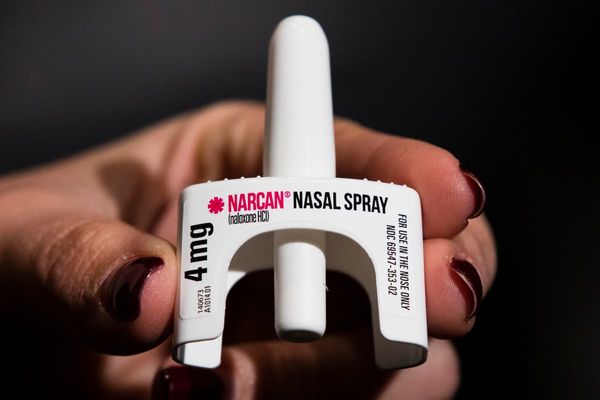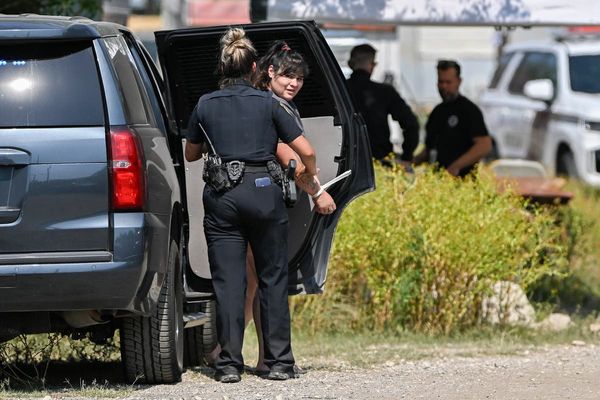
If you open Google Maps, and go to the road where, at the end of the 1970s, the Enfield Poltergeist is said to have haunted the Hodgson family, and if you scroll along the pebble-dashed semis, now poshened slightly with UPVC windows and Sky dishes, you will see a blur where No 284 should be. Upon arriving at this picture one night on my laptop, I felt a certain chill.
Without really realising it, I’d been immersing myself in various horrors of the 70s every evening for some weeks. My eyes had browned. My fingers had yellowed. I became briefly yet powerfully northern. First, I’d watched The Reckoning, the Steve Coogan drama about serial rapist Jimmy Savile on the BBC, then The Long Shadow on ITV about serial killer Peter Sutcliffe, then, on Apple, a documentary series about the Enfield Poltergeist, the case where Janet, a young girl, appeared to be possessed by an old man called Bill. “I was used and abused,” she said in 2018 of the experience. I’ve written before about what this case meant to me, its questions around collective hysteria, repressed adolescent sexuality, class, fear, the suburbs as a site of darkness and performance, and so on, and on. I’ve revisited the story frequently, ever since I was a similar age to Janet. For my degree show at art college, I built Janet’s bedroom, and filled it with a sound frequency said to produce feelings of fear. I almost failed the course, but I had a lovely time.
The TV series is disturbingly accurate and is interspersed with witnesses’ memories, while actors lip-sync recordings made by investigator Maurice Grosse in 1977. The crackling voices of children and neighbours feel like ghosts themselves and they give the sense somehow that we, the avid modern viewers, are complicit in the haunting. More than any other retelling of the story I’ve seen (and it has been retold many times on screen, with two major stage productions currently in rehearsals), this series feels uncomfortably real. You’re there in their fear, drinking the tea, smoking the fags, waiting for dead Bill to talk again in a voice like cars on gravel.
Part of this is due to the exquisite set design, which is also true of The Long Shadow – in both shows we return to a pre-digital 1970s where women who walk alone at night are routinely dismissed as slags by police, and where people can disappear, and violence is fine and the weather is shit. Looking at these grim new period dramas, it feels like the 1970s have become this generation’s Victorian age, a dark spot after the psychedelic hope of the 1960s was replaced by strikes and blackouts. This is a world away from the last iteration of 70s nostalgia, with its velvet interiors and sequined glamour – as a viewer I watch these shows with one eye closed, half thrilling that we are so far beyond all that now, the other half quietly wondering how much has really changed. I watch them like a warning.
There are signs that we have become more credulous recently: 41% of Britons say they believe in the supernatural and reports of poltergeist-like activity (objects disappearing, footsteps thumping, lights switching on and off) increased after the pandemic. “The Poltergeist is not a spirit,” wrote Hungarian ghost hunter Nandor Fodor at the end of the 1930s, a time of great grief and change, and many reported ghosts, “it has no identity, it brings no messages from the dead; it is a bundle of projected repressions bent on destruction and mischief because it is born out of rage and frustration.” Rage and frustration, and loneliness and anxiety – it is no wonder, perhaps, that new claims of thumps are being reported today. This is also a time of restless fears.
Sometimes, people choose to look back into history, or towards supernatural explanations, to avoid acknowledging that the real world is still filled with horror. We might know more than we did in the 1970s about the horrors seen in these period dramas – how to test for DNA for example, or how prejudice affects the way a victim is treated – but men are still murdering women every week, and the conviction rate for rape remains at less than 2%. We know plenty now, we know so much. But just as so many of us keep on smoking when we know it causes cancer, everyone knows our daily choices are contributing to the climate emergency, and most still continue to drive, and fly, and eat meat and have babies. In the same way that poltergeists reappeared in 2020 to give form to recent anxieties, a dark kind of magical thinking is at play. One fuelled by pundits who create ghosts in the form of immigrants and minorities to distract us from the everyday crimes of politicians and billionaires.
When the current owners of the Enfield house blurred its face, presumably to put off rubberneckers like me, they also made it ghostlike. This was the house where reporters and investigators camped for months in the living room, and sisters seemed to levitate, and furniture seemed to move, a site of shame and speculation, and a story which stretched across decades, fine enough to wrap around both new and persistent fears. Revisiting the bad old days, whether on Google Maps or TV, can eerily illuminate our present terrors.
Email Eva at e.wiseman@observer.co.uk or follow her on Twitter @EvaWiseman







